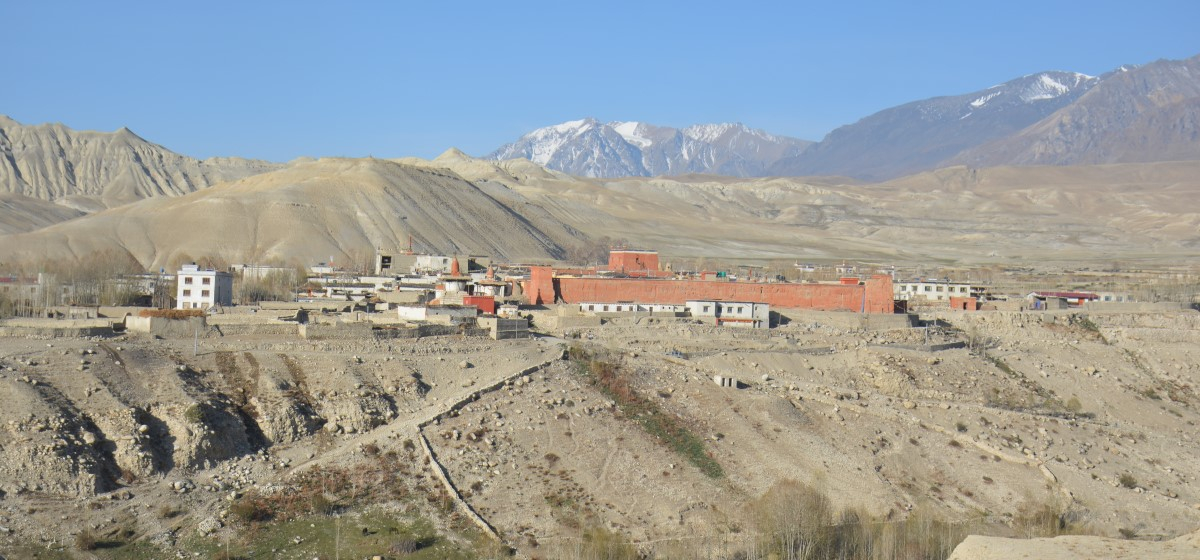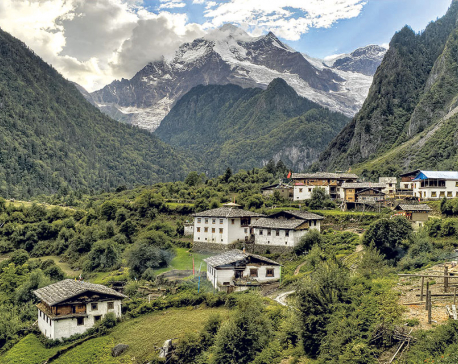
OR
COVID-19 reported above 3,900 meters in Mustang and 3,500 meters in Manang
Published On: May 20, 2021 05:09 PM NPT By: Republica

POKHARA, May 20: Manang and Mustang in Gandaki Province are sparsely populated Himalayan districts inside the country. Despite low population, the rural municipalities of each district are quite distant from each other, taking a single journey over a day to complete. Each of the districts has only one main checkpoint. Mustang is passed through the checkpoint in Myagdi and Lamjung is used for Manang.
Both himalayan districts are tourist hotspots but the ongoing fear of the pandemic has affected the flow of tourists. Despite the low traffic of people, the second wave of the novel coronavirus (COVID-19) disease has reached the highlands of both districts. According to the respective district’s health offices, the virus has reached 3,500 meters above sea level in Manang and 3,900 meters above sea level in Mustang district.
Khangsar which is a village at 3,500 meters in Manang and lies along the Annapurna circuit has been affected by the virus. Foreing tourists and a few locals have tested positive for COVID-19 but so far no death has been recorded.
According to the chief of the district health office in Manang, Badriraj Acharya, there are 52 active cases of COVID 19 in Manang district including two foreing tourists. Among the four local governments of Manang district, Nafru and Naso rural municipalities are the only unaffected areas at the moment. Chame Rural Municipality and Manang Ngisyang Rural Municipality have reported cases of the contagious disease.
“While the COVID-19 infection was on the rise elsewhere, the tourist flow in Manang resumed carelessly. The traffic from tourists and locals from Pokhara and Kathmandu were also on the rise,” Acharya said. “The situation could have been controlled if safety measures had been taken in April.” The ongoing prohibitory order enforced in Lamjung district has closed the entry points to Manang halting the traffic of people, he added.
According to Acharya, locals of Manang also live in Kathmandu which sees regular traffic in Manang and Kathmandu. The regular traffic between the capital and the himalayan district may have helped the virus to spread to Manang, he said. “The virus has reached the highlands of the district due to the regular flow of tourists and locals in the district,” Acharya said.
Despite the infection which was on the rise, Manang had an open flow of traffic. Two foreign tourists have tested positive for COVID-19. A male from the Netherlands and a female from Germany have contracted the virus in Manang. The Netherlands national is currently isolated in upper Manang but the female from Germany is out of contact at the moment, Acharya said. As many as 39 patients are in home isolation while the rest are being treated in institutional isolation, he said.
“People in home isolation are under surveillance,” Acharya said. He also said that the influx of employees working in government and private offices has also helped to spread the COVID-19 infection. According to Acharya, people who were not listed in the list of contact tracing have also become ill. Some of the patients have been airlifted to Pokhara for further treatment, he said.
Mustang, another himalyan district in Gandaki Province has a higher case of COVID-19 infection than Manang. According to chief of the district health office, Tikaram Bhandari, the infection has reached Choser village situated at 3,900 meters in Lomanthang Rural Municipality. So far, four have succumbed to the virus in Mustang district. The list of the deceased includes one person from Baragu Muktichetra Rural Municipality, two from Gharapjhong Rural Municipality and one from Thasang Rural Municipality, Bhandari said.
There are currently 135 active cases of COVID-19 in Mustang. “The higher the infection reaches, the harder it will be to manage the spread of the disease,” Bhandari said. As many as 21 patients have been sent to Pokhara for further treatment following the second wave of the pandemic. According to Bhandari, there are 13 patients in institutional isolation and 109 active cases of COVID-19 in home isolations in the district.
“Due to the locals residing in Kathmandu and Pokhara, the district saw a moderate flow of traffic during the rise of the second wave of COVID-19. “Also, the flow of workers in various construction projects of roads and bridges in the district have contributed to the spread of the virus to the highlands of the districts,” he said.
He said the spread of the disease to even the upper highlands has posed a great challenge. “There is no easy access to medical oxygen, nor vehicles,” he said. He said that making contact with Pokhara on time is also not possible as there is no access to the remote areas with vehicles due to the himalyan geography of the district.
You May Like This

COVID-19 redetected in Manang district
MANANG, Dec 18: A few COVID-19 cases have been reported again in Manang district. ... Read More...

Off the beaten track
Manang, Mustang, Annapurna Base Camp and the likes are some popular travel destinations in Nepal. With the numbers of travelers,... Read More...

Manang and Mustang in grip of freezing cold
POKHARA, Dec 5: The mercury is falling for the past few days in Manang and Mustang, the districts beyond the... Read More...





Just In
- NRB introduces cautiously flexible measures to address ongoing slowdown in various economic sectors
- Forced Covid-19 cremations: is it too late for redemption?
- NRB to provide collateral-free loans to foreign employment seekers
- NEB to publish Grade 12 results next week
- Body handover begins; Relatives remain dissatisfied with insurance, compensation amount
- NC defers its plan to join Koshi govt
- NRB to review microfinance loan interest rate
- 134 dead in floods and landslides since onset of monsoon this year












Leave A Comment